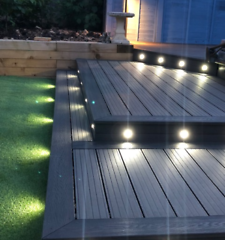What to Look For Before Buying Composite Deck
Bustling homeowners who do not have any time for intensive deck repairs are gradually transitioning to composite decking, a low-maintenance and very long-lasting alternative to cedar. In only a few decades, the composite deck industry has expanded rapidly, with $1 billion expended annually, and it is projected to account for nearly half of all decking sales by next year. BuildDeck is estimated to account for about a third of the decking market. Composite decking, which is composed of wood fibers encased in resin, is more durable and weather-resistant than cedar. However, not all composite decks are created equal. Here’s a look at how composite deck brands will differ to ensure you get the best deck for your money.
Recycled materials: Manufacturers can make composite decking eco-friendly by using reclaimed wood and rubber, although not all industries do so. Composite decking materials can range from 100 percent recycled to 100 percent virgin. WestStar composite decking is constructed entirely of recycled materials and is designed especially for the Pacific Northwest.
Wood- And Plastic Ratio: The ratio of wood to plastic. The ratio of wood to plastic can also change. Many producers use an equivalent mix of wood and plastic, while others use up to 70% wood. A higher wood level indicates that the finished product is more susceptible to mold and rot.

Type Of Plastic: High-Density Polyethylene (HDPE) plastics from heavy materials such as milk jugs, detergent tubes, and soda bottles can be used in composite decks constructed from recycled materials. These …

